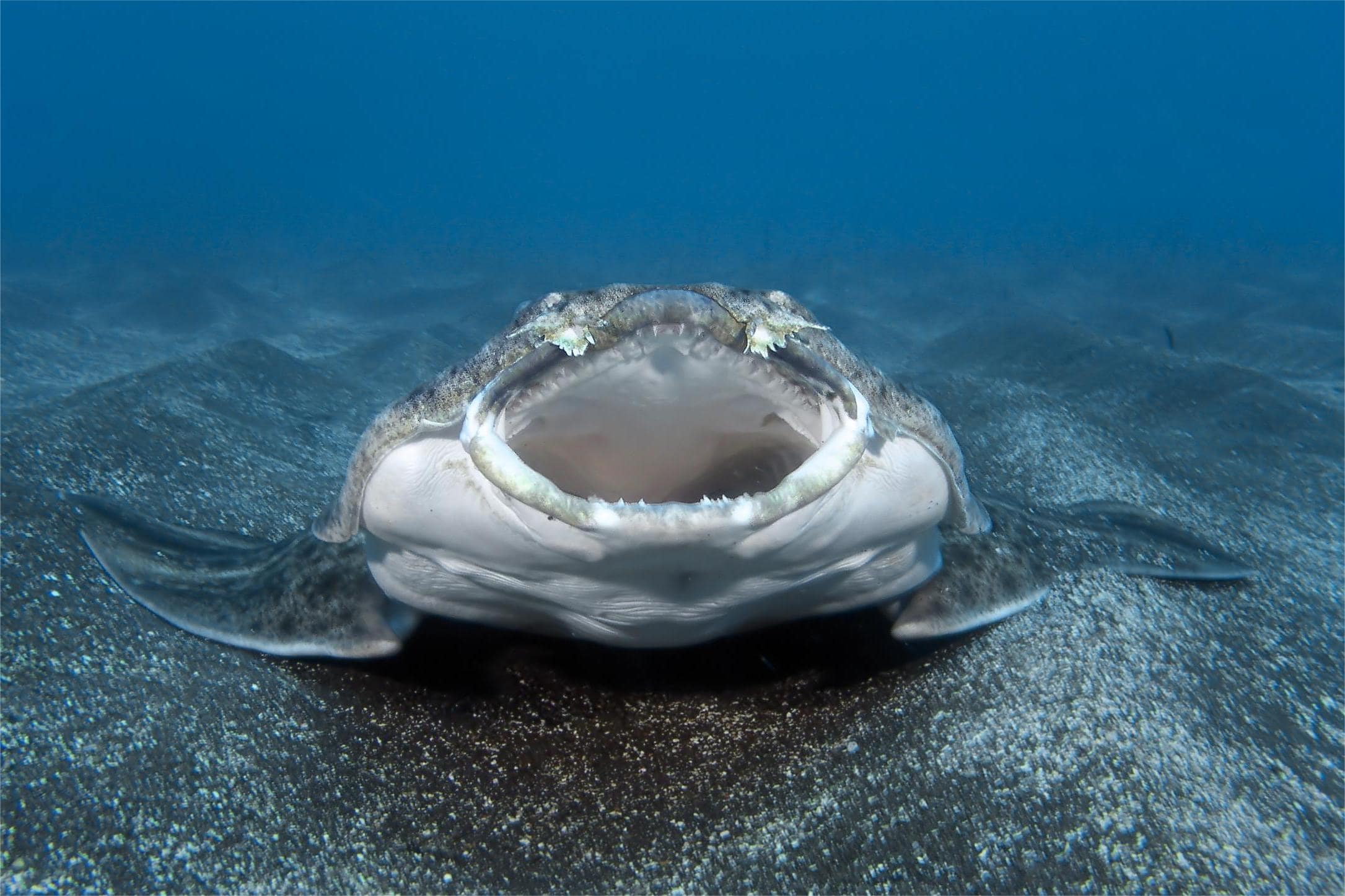
Angelsharks are some of the ocean's most intriguing creatures. With their flat bodies and broad pectoral fins, they resemble rays more than typical sharks. Found in temperate and tropical waters, these bottom-dwellers are masters of camouflage, often burying themselves in sand to ambush prey. Despite their fierce appearance, they pose little threat to humans. Sadly, many species are now critically endangered due to overfishing and habitat destruction. Angelsharks play a crucial role in marine ecosystems, helping maintain the balance of species. Learning about these fascinating sharks can inspire efforts to protect them and their habitats. Ready to dive into 26 amazing facts about Angelsharks? Let's get started!
What is an Angelshark?
Angelsharks are fascinating creatures that often get mistaken for rays due to their flat bodies. They belong to the family Squatinidae and are known for their unique appearance and intriguing behaviors. Here are some captivating facts about these elusive sharks.
-
Angelsharks have a flattened body that helps them blend into the ocean floor, making them excellent ambush predators.
-
Unlike most sharks, angelsharks have pectoral fins that are more like wings, giving them a ray-like appearance.
-
These sharks can grow up to 2.4 meters (about 8 feet) in length, though most are smaller.
-
Angelsharks are nocturnal hunters, preferring to feed at night when their prey is less alert.
-
Their diet mainly consists of fish, crustaceans, and mollusks, which they catch using a sudden lunge and powerful suction.
Habitat and Distribution
Angelsharks are found in various parts of the world, often in temperate and tropical waters. Their unique habitat preferences make them interesting subjects for marine biologists.
-
They are commonly found in the Mediterranean Sea, the eastern Atlantic Ocean, and parts of the Pacific Ocean.
-
Angelsharks prefer sandy or muddy bottoms where they can easily bury themselves to ambush prey.
-
These sharks are often found at depths ranging from 5 to 150 meters (16 to 492 feet).
-
Some species of angelsharks are known to inhabit coastal areas, while others prefer deeper offshore waters.
-
The critically endangered common angelshark (Squatina squatina) was once widespread but is now mostly found around the Canary Islands.
Reproduction and Lifespan
Angelsharks have unique reproductive behaviors and life cycles that set them apart from other shark species.
-
They are ovoviviparous, meaning the eggs hatch inside the female's body, and she gives birth to live young.
-
A female angelshark can give birth to 7 to 25 pups at a time, depending on the species.
-
The gestation period for angelsharks is about 8 to 10 months.
-
Newborn angelsharks are fully independent and receive no parental care after birth.
-
Angelsharks can live up to 35 years in the wild, though their lifespan can vary based on environmental factors and human impact.
Conservation Status
Angelsharks face numerous threats that have led to a decline in their populations. Conservation efforts are crucial to their survival.
-
Many species of angelsharks are listed as critically endangered due to overfishing and habitat destruction.
-
Bycatch in commercial fishing nets is a significant threat to angelsharks, as they often get caught unintentionally.
-
Habitat degradation, such as coastal development and pollution, also poses a risk to their populations.
-
Conservation programs are in place in some regions to protect angelsharks, including marine protected areas and fishing regulations.
-
Public awareness campaigns aim to educate people about the importance of preserving angelshark habitats and reducing bycatch.
Unique Adaptations
Angelsharks have evolved several adaptations that help them survive in their specific environments.
-
Their coloration and patterns provide excellent camouflage, allowing them to blend seamlessly with the ocean floor.
-
Angelsharks have sensory organs called ampullae of Lorenzini, which detect the electric fields produced by prey.
-
They can remain motionless for long periods, conserving energy while waiting for prey to come within striking distance.
-
Angelsharks have a unique jaw structure that allows them to create a powerful suction to capture prey quickly.
-
Their eyes are positioned on top of their heads, giving them a wide field of vision to spot potential threats and prey.
Fun Facts
Angelsharks are not just fascinating for their biology but also for some quirky traits and behaviors.
- Despite their fearsome appearance, angelsharks are generally not aggressive towards humans and prefer to avoid contact.
The Final Splash
Angelsharks are truly fascinating creatures. Their unique flat bodies, camouflaging abilities, and nocturnal hunting habits make them stand out in the underwater world. These sharks, often mistaken for rays, play a crucial role in maintaining the balance of marine ecosystems. Sadly, their numbers are dwindling due to habitat loss and fishing activities. Conservation efforts are essential to protect these incredible animals and ensure they thrive for future generations. By learning more about angelsharks and spreading awareness, we can all contribute to their preservation. Next time you think of sharks, remember the angelshark's unique charm and the importance of protecting such remarkable species. Dive into the world of angelsharks and share their story with others. Every bit of knowledge helps in the fight to save these underwater angels.
Was this page helpful?
Our commitment to delivering trustworthy and engaging content is at the heart of what we do. Each fact on our site is contributed by real users like you, bringing a wealth of diverse insights and information. To ensure the highest standards of accuracy and reliability, our dedicated editors meticulously review each submission. This process guarantees that the facts we share are not only fascinating but also credible. Trust in our commitment to quality and authenticity as you explore and learn with us.
